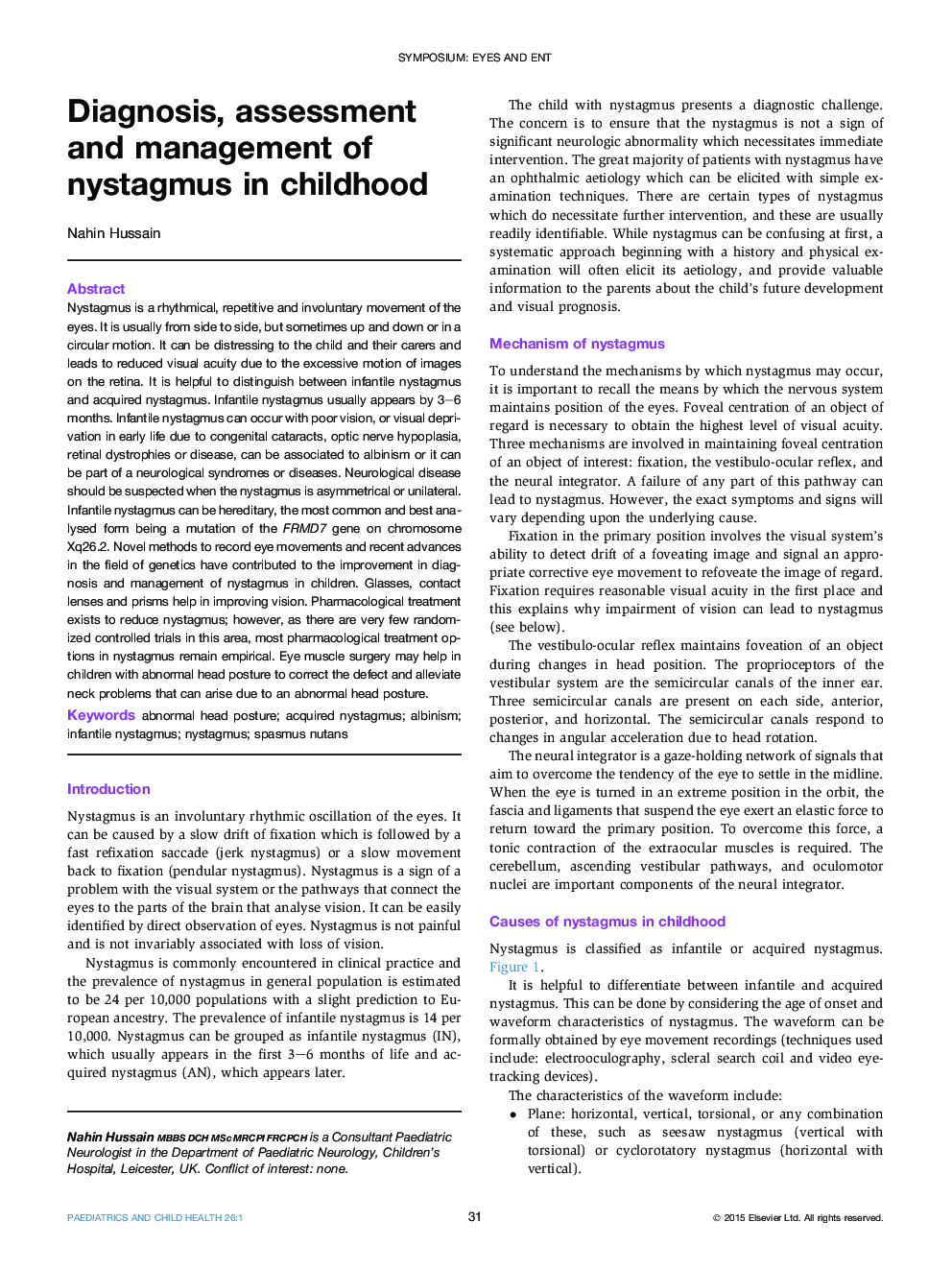| کد مقاله | کد نشریه | سال انتشار | مقاله انگلیسی | نسخه تمام متن |
|---|---|---|---|---|
| 4172068 | 1275717 | 2016 | 6 صفحه PDF | دانلود رایگان |
Nystagmus is a rhythmical, repetitive and involuntary movement of the eyes. It is usually from side to side, but sometimes up and down or in a circular motion. It can be distressing to the child and their carers and leads to reduced visual acuity due to the excessive motion of images on the retina. It is helpful to distinguish between infantile nystagmus and acquired nystagmus. Infantile nystagmus usually appears by 3–6 months. Infantile nystagmus can occur with poor vision, or visual deprivation in early life due to congenital cataracts, optic nerve hypoplasia, retinal dystrophies or disease, can be associated to albinism or it can be part of a neurological syndromes or diseases. Neurological disease should be suspected when the nystagmus is asymmetrical or unilateral. Infantile nystagmus can be hereditary, the most common and best analysed form being a mutation of the FRMD7 gene on chromosome Xq26.2. Novel methods to record eye movements and recent advances in the field of genetics have contributed to the improvement in diagnosis and management of nystagmus in children. Glasses, contact lenses and prisms help in improving vision. Pharmacological treatment exists to reduce nystagmus; however, as there are very few randomized controlled trials in this area, most pharmacological treatment options in nystagmus remain empirical. Eye muscle surgery may help in children with abnormal head posture to correct the defect and alleviate neck problems that can arise due to an abnormal head posture.
Journal: Paediatrics and Child Health - Volume 26, Issue 1, January 2016, Pages 31–36
